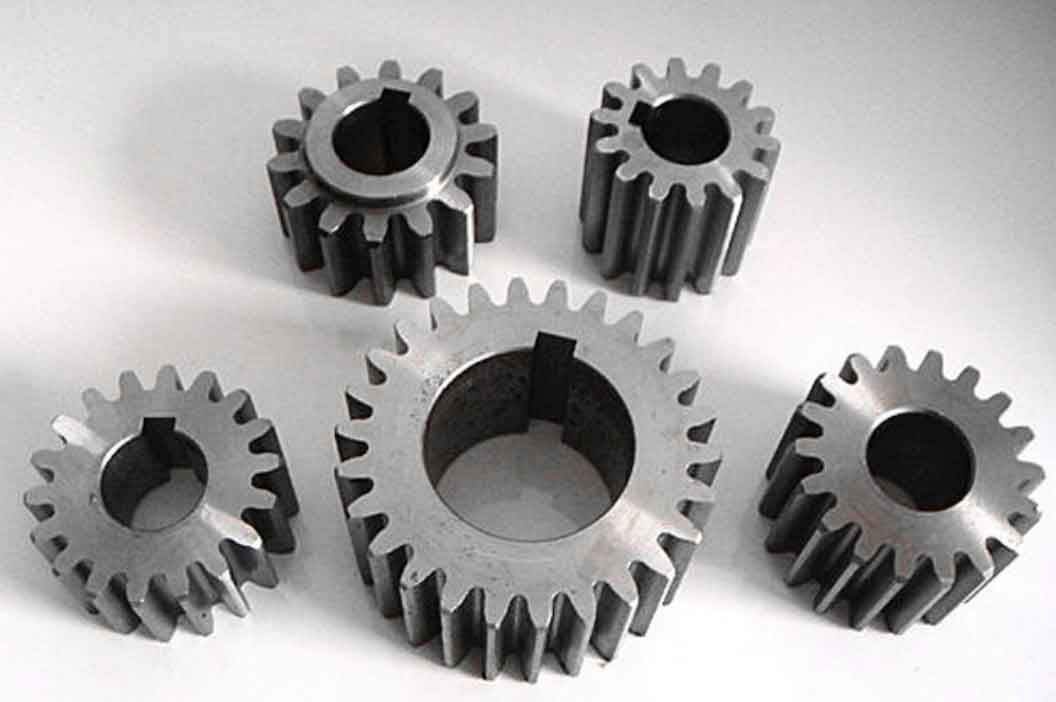Abstract
The tooth pitch deviation in spur gear, resulting from factors such as workpiece mounting eccentricity during the manufacturing stage and low precision of the machine tool indexing worm gear, is one of the primary internal excitations during gear meshing. To reveal the influence of tooth pitch deviation on the nonlinear behavior and extended tooth contact in spur gear transmission systems, this paper establishes a dynamic model for spur gear pairs that considers tooth side clearance, contact ratio, tooth-to-tooth coupling effects, tooth pitch deviation, and extended tooth contact. The dynamic equations are numerically solved using the fourth-order Runge-Kutta method based on the C programming language. Various analysis methods, including bifurcation diagrams, phase portraits, Poincaré maps, frequency spectrum diagrams, extended tooth contact rates, and contact forces, are utilized to investigate the nonlinear behavior and extended tooth contact of spur gear transmission systems under different levels of tooth pitch deviation.

Key Information Summarized in Tables
| Aspect | Details |
|---|---|
| Research Focus | Tooth Pitch Deviation Effects on Spur Gear Dynamics |
| Model Considerations | – Tooth Side Clearance <br> – Contact Ratio <br> – Tooth-to-Tooth Coupling Effects <br> – Tooth Pitch Deviation <br> – Extended Tooth Contact |
| Numerical Method | Fourth-Order Runge-Kutta Method Based on C Language |
| Analysis Tools | – Bifurcation Diagrams <br> – Phase Portraits <br> – Poincaré Maps <br> – Frequency Spectrum Diagrams <br> – Extended Tooth Contact Rates <br> – Contact Forces |
| Main Findings | – Tooth pitch deviation does not significantly alter the bifurcation process but can induce near-periodic motion, chaotic motion, and transitions between coexisting attractors. <br> – The phase trajectories of the system under periodic motion change from short-periodic closed loops to long-periodic closed loops. <br> – Varying degrees of tooth pitch deviation alter the extended tooth contact rates, with higher contact rates for teeth entering the mesh than those exiting. |
Dynamic Behavior and Extended Tooth Contact
The study’s findings are illustrated through detailed analysis and visualizations:
- Bifurcation Diagrams show the evolution of system behavior as tooth pitch deviation varies.
- Phase Portraits depict the trajectories of system states over time, revealing changes in periodicity and chaotic behavior.
- Poincaré Maps provide snapshots of the system’s state at regular intervals, highlighting attractors and their coexistence.
- Frequency Spectrum Diagrams reveal the frequency components of system vibrations, aiding in the identification of chaotic and periodic motion.
- Extended Tooth Contact Rates and Contact Forces are quantified, showing how they are influenced by tooth pitch deviation and their implications for spur gear performance.
Conclusion
This paper presents a comprehensive study on the nonlinear dynamics and extended tooth contact of spur gear pairs under tooth pitch deviation. By establishing a detailed dynamic model and employing advanced analysis methods, the study reveals the complex interactions between tooth pitch deviation and system behavior. The findings provide valuable insights into the design and optimization of spur gear transmission systems, highlighting the importance of considering tooth pitch deviation in ensuring smooth and efficient gear operation. The proposed research framework and findings can serve as a reference for future studies on spur gear dynamics under various internal and external excitations.
